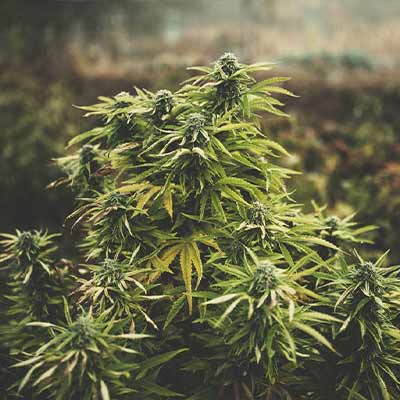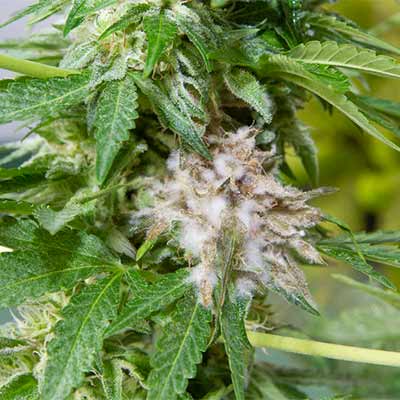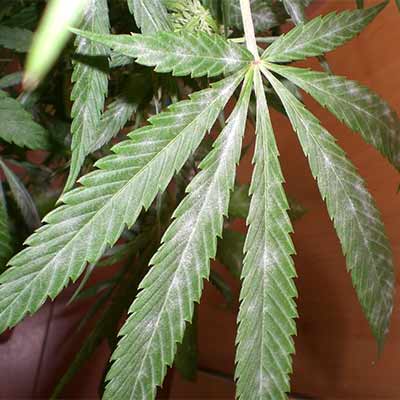BackMold on Cannabis: which types are most common and how to prevent them
24.07.2025

One of the most unpleasant travel companions for any self-respecting cannabis seed collector is mold. Hidden in the dark, fungi remain dormant until the right conditions—heat, humidity, and poor ventilation—create an ideal environment for their sudden appearance. Today, there are countless fungal varieties that can seriously harm your cannabis plants. To detect them early, you first need to understand them better. Which are the most common types of mold in cannabis? What happens if I smoke moldy weed? Get ready to explore the unsettling world of cannabis fungi and discover the effects their spores can have on the human body.
Types of Mold on Cannabis Plants
Like all living plants, cannabis is susceptible to sudden invasions by microorganisms that can compromise its health. The impact of mold on your cannabis varies depending on the type of fungus and the maturity of the plant. Several types of mold can affect cannabis plants in very different ways. To identify them correctly, it’s essential to recognize the key symptoms and apply treatment as early as possible to save part of the plant.
One of the most common molds in cannabis is Botrytis. Despite its severe effects, it’s relatively easy to remove. Botrytis induces plant necrosis and can affect any part of the plant—from the roots to the stem. It’s recognizable by its brownish layer and distinctive texture. Because it spreads aggressively, it’s critical to act quickly. To eliminate this gray mold, remove the infected parts to limit further spread—especially since high humidity accelerates it. Contaminated buds can infect the rest of the plant, so discard and destroy them immediately. To keep this mold at bay, ensure good air circulation, raise the temperature to 26 °C, and keep humidity levels below 50%.
Another common mold is powdery mildew (Oidium). It reveals itself through a white, powdery coating on your cannabis plant. As with most fungi, humidity above 50% and temperatures over 20 °C create the ideal breeding ground. Sudden temperature changes can also trigger outbreaks. If not detected early, powdery mildew can seriously damage your plants. While these are two of the most recognized types, other dangerous fungi exist too—like downy mildew, which causes significant discoloration and leaves dark, translucent spots with an unsightly layer of white dust. You can fight it by improving ventilation and applying fungicides within the first 72 hours. After that, it becomes far harder to treat.
How to Effectively Eliminate Mold on Cannabis
If you find mold on your cannabis plants, your best option is to visit a store and buy fungicides or herbicides. But if you plan to consume the weed, be cautious: smoking moldy cannabis is extremely harmful—and consuming buds treated with chemicals is no better. Any chemical used could end up in your body. Moldy weed can damage your health, spread to other plants, and leave harmful residues in the air, affecting the respiratory system. Some natural remedies, like horsetail extract, may help prevent mold, but they won’t eliminate established colonies. Careful monitoring is key—early detection is your best chance at solving the problem.
Is It Harmful to Smoke Moldy Weed?
You’ve probably asked yourself, “What happens if I smoke moldy cannabis?” It’s a common question across online forums. While it may seem harmless, the truth is that smoking moldy cannabis can cause serious respiratory problems. Botrytis spores, if inhaled, can lead to pneumonitis, while exposure to Aspergillus mold can cause aspergillosis—a dangerous condition. Even worse, aspergillomas—fungal balls that develop in scarred lung tissue—are considered invasive tumors that can spread to other parts of the body. This makes extreme caution absolutely necessary.
As you can see, smoking moldy cannabis is never recommended. The health risks range from respiratory illnesses to tumor formation. So now you have the answer to your question: mold can not only ruin your plant—it can also lead to chronic disease. Your lungs may become a breeding ground for fungal spores, and that’s something you want to avoid at all costs.


